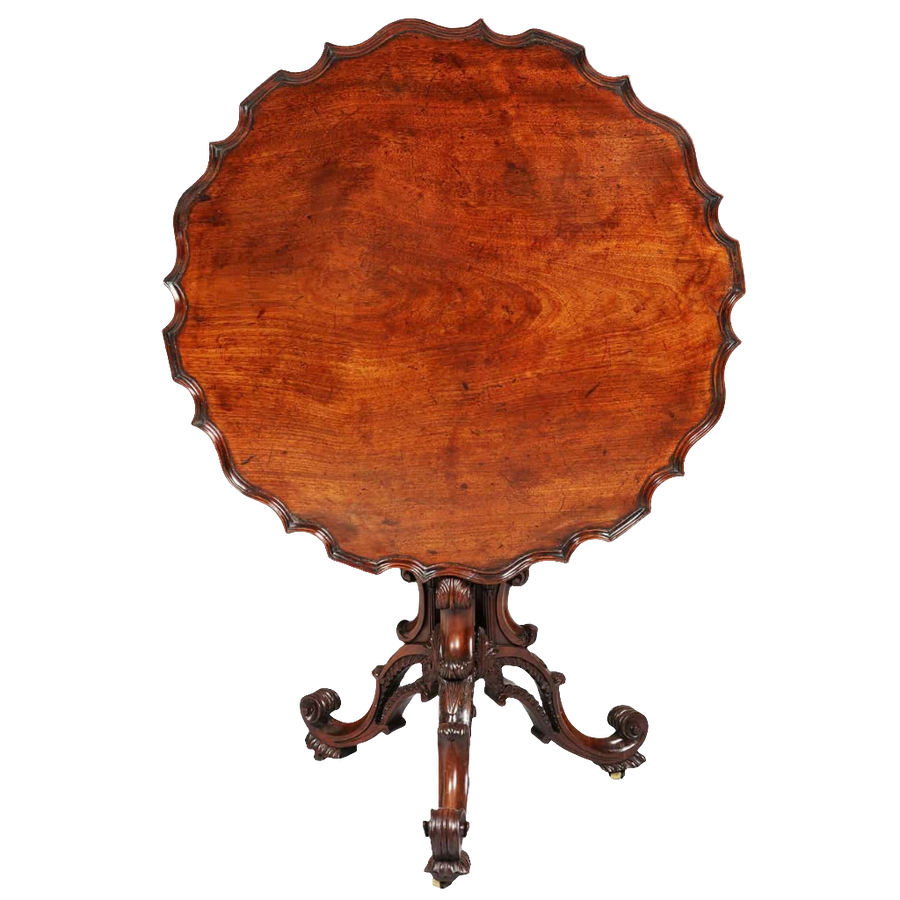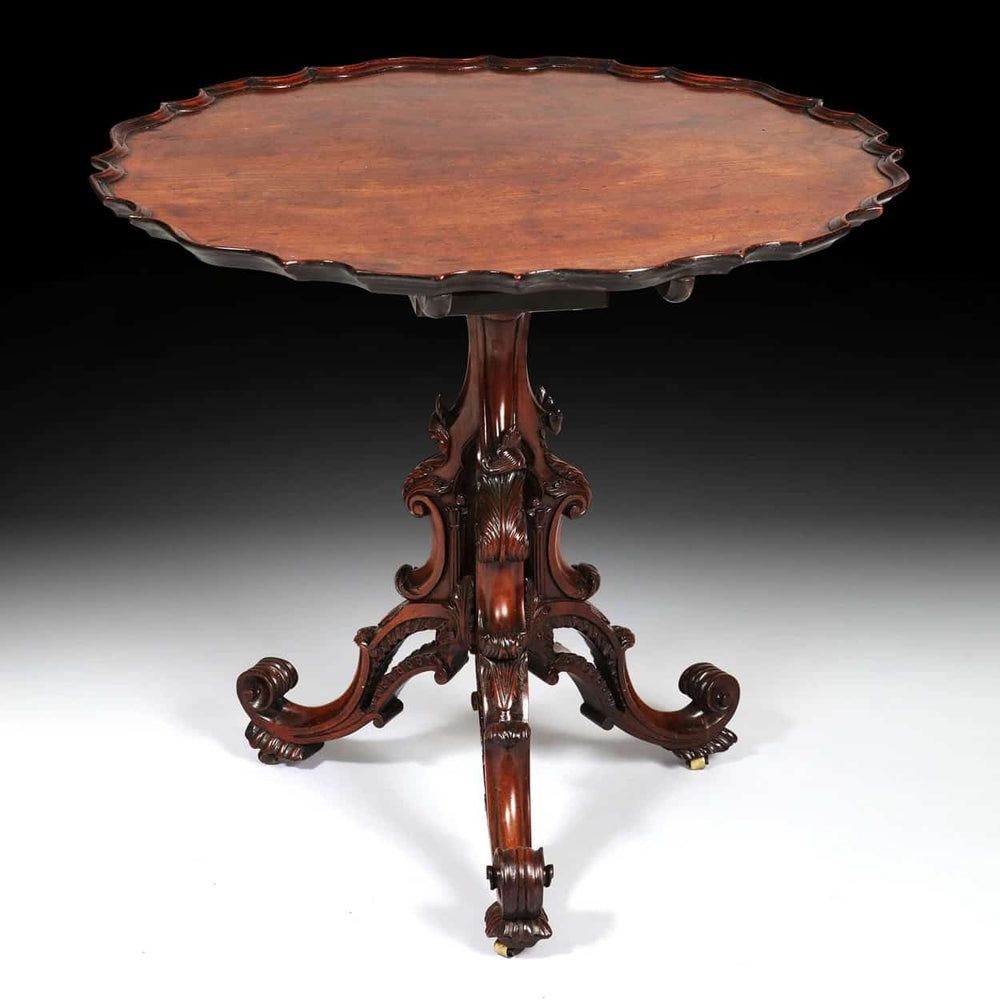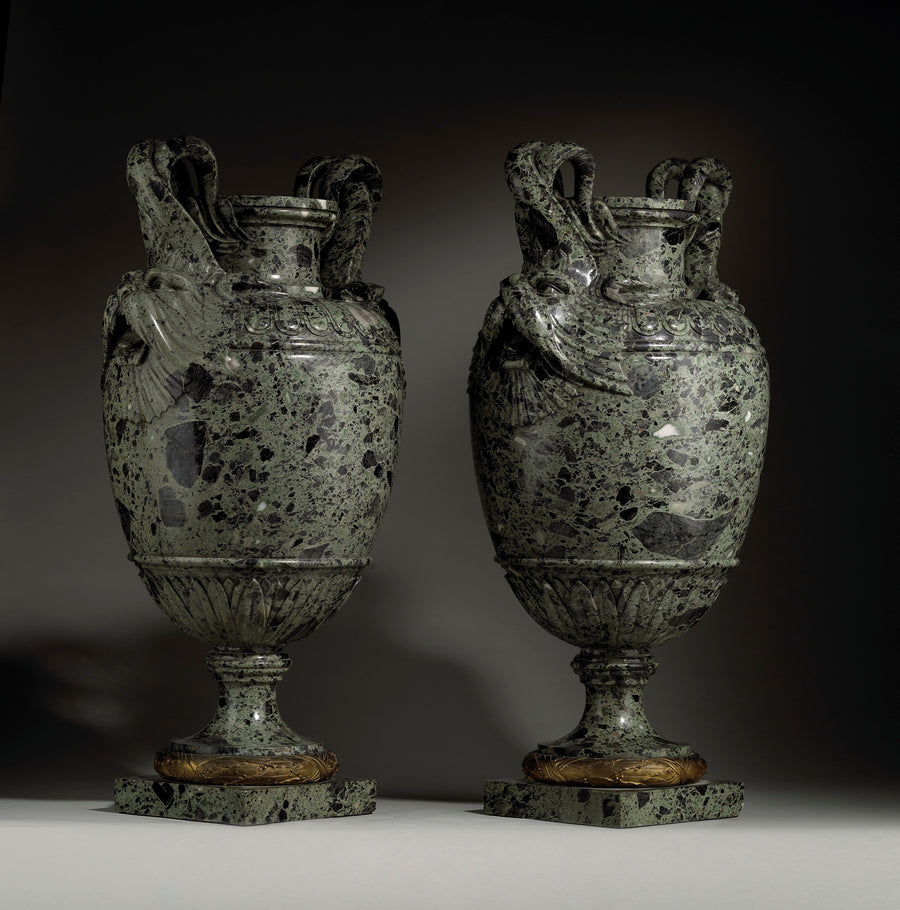The Corsi Collection of Decorative Stones
The Corsi Collection
Avvocato Faustino Corsi (1771–1846), a Roman lawyer and scholar, is a name of distinction in the world of decorative stones. His pioneering passion for collecting, cataloguing, and classifying stones established the famous Corsi Collection — today regarded as one of the most important references for decorative stones in art, archaeology, and geology.
 A Grand Tour Rare Greek Porphyry Marble Vase at Nicholas Wells Antiques Ltd.
A Grand Tour Rare Greek Porphyry Marble Vase at Nicholas Wells Antiques Ltd.
What Are Decorative Stones?
The term decorative stones refers to any rock or mineral that can be cut and polished to reveal beauty. Examples include serpentines, granites, marbles, jaspers, jade, fluorite, and amethyst. Since antiquity, such stones have been used to embellish furniture, artefacts, and architecture — from ancient Roman inlays to 19th-century Grand Tour masterpieces.
Even today, decorative stones are prized not only for their durability but also for their timeless aesthetic appeal in both private homes and public monuments.


Faustino Corsi: Lawyer, Collector, Scholar
Though professionally a respected Roman lawyer, Faustino Corsi’s passion lay in the arts, music, archaeology, and above all, decorative stones. He assembled an extraordinary collection of over 1,000 specimens — a survey of stones used in antiquity and in his own day, ranging from Rome and Italy to Russia, England, and beyond.
What made the collection unique was not simply its breadth but also its scholarly value: Corsi meticulously labelled each specimen with its place of origin and was the first to apply a geological classification system to decorative stones.

The Catalogues
Corsi published his celebrated catalogue in 1825, describing 900 stones, and in 1827 issued a supplement covering the remaining 100. He divided his collection into 15 classes, each described in detail — a system that became a foundational reference for the study of decorative stones.
His work was pioneering: before Corsi, decorative stones had largely been admired for beauty alone. He gave them context, taxonomy, and scientific order.


Legacy and Where the Collection Is Today
-
Oxford University Museum of Natural History – The original Corsi Collection was purchased by Stephen Jarrett, one of Corsi’s students, and later donated to Oxford, where it remains a vital research resource.
-
Natural History Museum, London – Corsi assembled at least one further collection after selling his first; this later group is preserved today in London.
For these reasons, Corsi is remembered as both a collector and a scholar whose legacy straddles the fields of art history, archaeology, and geology.


Decorative Stones in Antiques
At Nicholas Wells Antiques, we continue to celebrate this legacy through fine furniture and objets d’art mounted with rare marbles and decorative stones — from granito verde della sedia di San Lorenzo to porphyry and lapis lazuli. Each piece speaks to the enduring fascination with colour, pattern, and the artistry of nature, just as Corsi recognised two centuries ago.



Faustino Corsi made at least one more collection of stones after he sold the collection of decorative stones to Stephen Jarrett. That collection is now a part of the Natural History Museum in London.
While Avvocato Faustino Corsi was a highly regarded judge in Rome, he was deeply interested in arts, music and archeology. Also, he had a strong passion of collecting and learning about decorative stones that were used in ancient Rome. He also extensively wrote on ancient decorative stones. His works are still considered highly valuable contributions in the fields of archeology and arts.
Do check out Nicholas Wells Antiques for an amazing collection of authentic antique pieces from all over the world.

Corsi Collection, Faustino Corsi, decorative stones, specimen marbles, antique marbles, Oxford Natural History Museum, decorative stone classification, Nicholas Wells Antiques












Leave a comment